Warm Up: Describe the motion of an object that has...
1. Positive velocity and negative acceleration
2. Negative velocity and negative acceleration
3. Zero velocity and positive acceleration
Today:
- Optional Quiz Retake
- Exam review -- work on note cards
- Test 2
- Momentum and Impulse
Homework:
- Work on your note card.
 Class
41:
Wednesday,
1/11/23
Class
41:
Wednesday,
1/11/23Warm Up: 1) Find the force of drag in the situation on the right. 2) How did you do it?
Today:
- Return Quizzes and go over the answers. Optional retake on Friday!
- Exam review -- work on note cards?
- Test 1
- Test 2
- Momentum and Impulse
Homework:
- Work on your note card.
 Class
40:
Monday,
1/9/23
Class
40:
Monday,
1/9/23Warm Up: Match each graph with all of the other graphs that can represent the same motion.
Today:
- Return Quizzes and go over the answers. Optional retake on Friday! VIDEO
- Exam review
- Hand out Test 1
- Discuss note card
- Jeopardy?
Homework:
- Work on your note card.
 Class
39:
Thursday,
1/5/23
Class
39:
Thursday,
1/5/23Warm Up:
The photograph on the right shows a homemade "Gauss Gun." In the picture there are 9 steel spheres and 4 cube-shaped magnets. The operator is preparing to roll one sphere toward a magnet. What will happen, and how will it work?
Today:
- Quiz -- momentum and impulse
- Egg drop -- create the lowest mass "vehicle" out of clear tape and paper that will help an egg survive a 10 foot drop. Write a pararaph explaining how your vehicle protects the egg by altering the nature of impulse and change in momentum. In your paragraph, discuss how the concepts of force, time, change in momentum, and impulse relate to crash safety.
Homework:
- None!
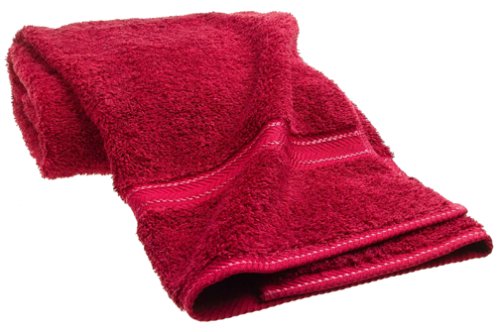 Class
38:
Tuesday,
1/3/23
Class
38:
Tuesday,
1/3/23Warm Up:
How can an understanding of momentum help you turn a towel into a better whip?
Today:
Homework:
- Study -- Quiz next class, like the practice quiz at the end of the packet. Maybe watch the video from class to prepare?
 Class
37:
Wednesday,
12/20/22
Class
37:
Wednesday,
12/20/22Warm Up:
1. Some cultures celebrate a character called Santa Claus, who delivers presents around the world in a sleigh. This event occurs over a time interval known as Christmas Eve. If Santa were to deliver a present to every child who believes in him, how fast would Santa need to accelerate between stops in order to deliver all of the presents on Christmas Eve? Santa Claus from an Engineer's Perspective
2. What happens at 4:26 this
afternoon?

Today:
- Return Tests -- you may retake any part of the test, but you will need to do it during FLEX, before the end of the quarter. Video going over test
- Check/review homework
- Momentum & Impulse
Homework:
- None!
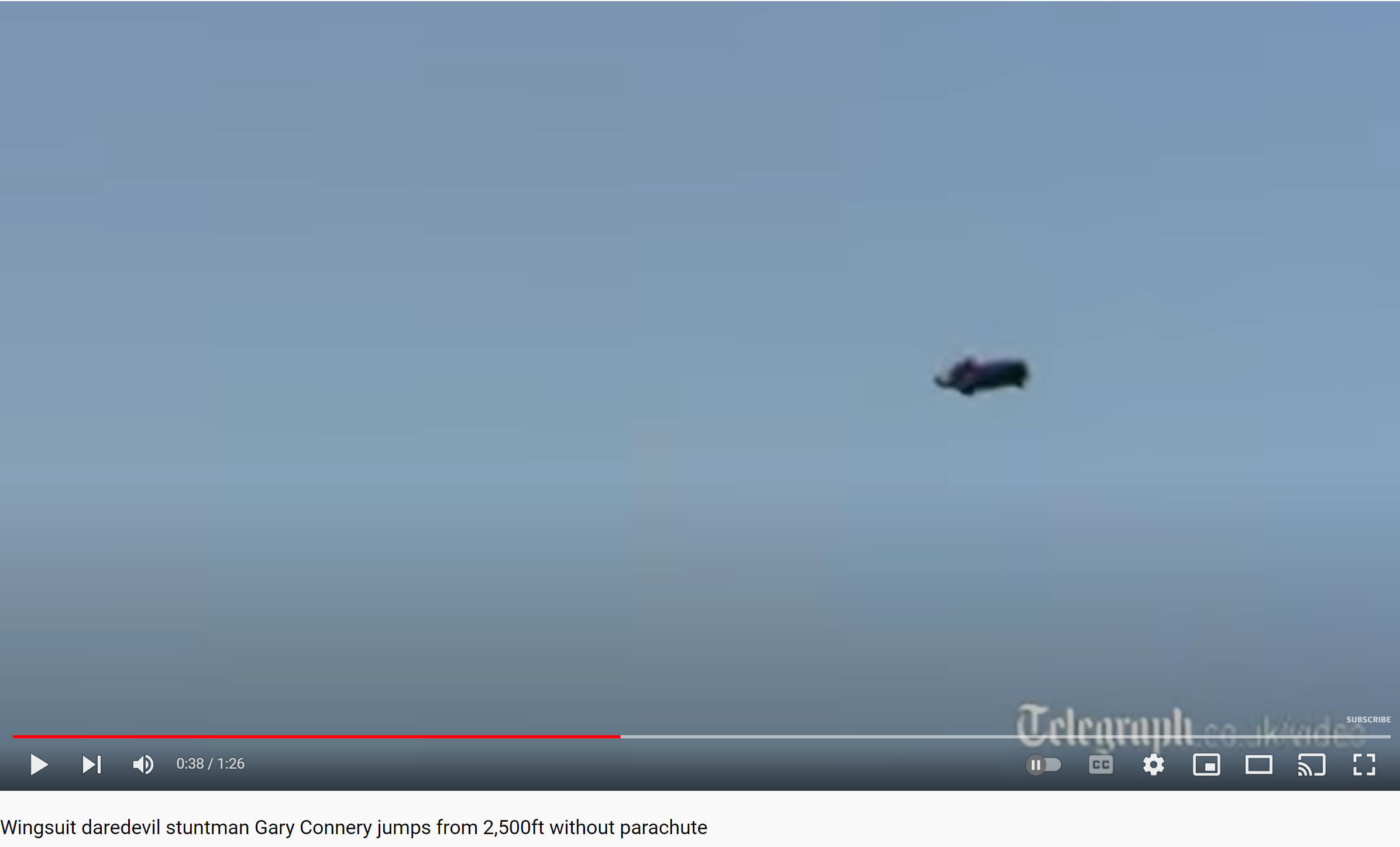 Class
36:
Monday,
12/19/22
Class
36:
Monday,
12/19/22Warm Up:
1. Here's the impulse formula. What does
it mean? ![]()
2. This picture shows a man who jumped from 2,500 feet with no parachute, but he is wearing a squirrel suit. Can you guess how he managed to land safely? Specifically, how can we explain the safe landing in terms of impulse (Ft)? Watch this video for the answer!
Today:
- Unit 2 Test
- Momentum & Impulse -- notes VIDEO
Homework:
- Packet p. 7
 Class
35:
Thursday,
12/15/22
Class
35:
Thursday,
12/15/22Warm Up:
Suppose I stand a board on end and shoot it with a Nerf ® dart.
1. Am I more likely to knock the board over if I use a dart that sticks to the board or if I use a dart that bounces off of the board? Why?
2. Which experiences a greater change in its momentum, the dart or the board? Or do they experience the same change?
 3.
Can we understand these better with an IF (Initial/Final) chart?
3.
Can we understand these better with an IF (Initial/Final) chart?
Today:
- Check/review homework VIDEO
- Return Quizzes
- Impulse Notes (Unit 3 Packet -- PDF -- Answer Key) VIDEO
- Test Review Stuff -- copies of the first two quizzes and the 3rd practice quiz
Homework:
- Study -- the test is on Monday
 Class
33:
Tuesday,
12/13/22
Class
33:
Tuesday,
12/13/22Warm Up:
1. What will happen if I hold a tennis ball on top of a basketball and drop them to the floor together?
2. Why does this happen?
Today:
- Quiz #3
- Turn in your test review packet, if it's completed.
- Begin Momentum & Impulse
- (Unit 3 Packet -- PDF -- Answer Key)
- Notes on page 1-2, plus some conservation of momentum practice problems.
- VIDEO from class
Homework:
- 3 conservation of momentum problems -- last problem on p.3, and the top 2 problems on p. 4. Answer Key
Warm Up: How does a Newton Cradle work? What's the point?
Today:
- Return Quizzes Here's a video explaining everything on the quiz.
- Check/review homework (VIDEO)
- Return spool car stuff
- Hand out test reviews.
- Start momentum on Tuesday.
Homework:
- Prepare for Quiz 3 -- study
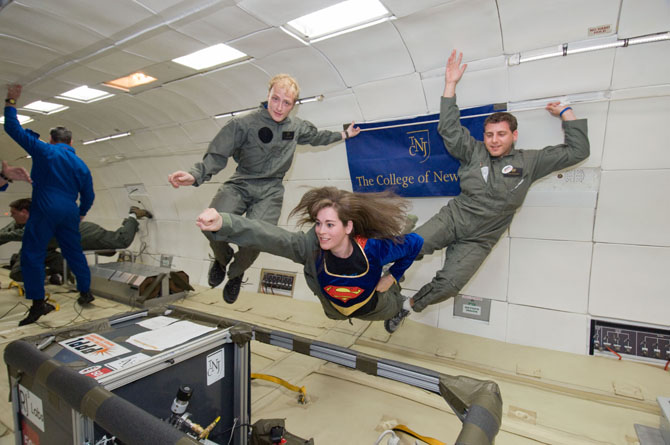 Class
31:
Wednesday,
12/7/22
Class
31:
Wednesday,
12/7/22Warm Up: How does NASA simulate weightlessness? Are the people in the video really weightless? Are astronauts in a space station weightless?
Today:
- Return quiz #2 -- OOOPS!! I forgot to grade them. I will return them on Friday. Sorry. Here's a video explaining everything on the quiz.
- Turn-in homework -- spool car activity (unless you turned it in on Monday). Go over results and solutions -- check a few with anonymity? Calculating spool car forces VIDEO
- Practice Quiz #3 (PDF). VIDEO solutions to page 1
Homework:
- Finish practice Quiz #3 Puck Help VIDEO
 Class
30:
Monday,
12/5/22
Class
30:
Monday,
12/5/22Warm Up: The picture on the right shows a sequence of events experienced by a bungee jumper. The blue arrows and letters indicate velocity. Draw a diagram showing all of the individual force, and the net force, acting on the bungee jumper for each lettered moment in the sequence. Also show the jumper's acceleration.
Today:
- Note -- if you want to have your rocket slideshow re-graded, give me back your grading sheet, so that I know what you missed the first time.
- Return slideshow grading sheets.
- Check/Review Homework video.
- Quiz
- Finish and turn in
Spool Car Forces Lab
PDF -- How do the forces acting on a spool car change when the
car is wound more or less?
- Example Problem -- packet p 14-15 VIDEO
- Collect data together, the following groups of students (by
last name) will share data
- A-G (16 feet of winding) -- we will do this one first. We may have to adjust the winding distances if this goes too far or not far enough.
- L-P (12 feet of winding)
- R-W (8 feet of winding)
- Perform calculations
Homework:
- If your group didn't finish the spool car forces lab calculations, finish them individually for homework.
 Class
29:
Thursday,
12/1/22
Class
29:
Thursday,
12/1/22Warm Up: A spool car is wound up and released. When the rubber band unwinds fully, a pin pops out, allowing the car to keep rolling.
1) What forces are acting on the car while the rubber band is pushing it?
2) What forces are acting on the car after the rubber band stops pushing, but before it stops rolling?
3) If we wind the rubber band more, which of those forces will change? How?
4) How can we calculate those forces?
Today:
- Check/Review Homework VIDEO
- Announcement: There will be two more quizzes before the unit test. Quiz #2 is next class (Monday).
-
Spool Car Forces Lab
PDF -- How do the forces acting on a spool car change when the
car is wound more or less?
- Example Problem -- packet p 14-15 VIDEO
- Collect data together, the following groups of students (by
last name) will share data
- A-G (16 feet of winding) -- we will do this one first. We may have to adjust the winding distances if this goes too far or not far enough.
- L-P (12 feet of winding)
- R-W (8 feet of winding)
- Perform calculations
Homework:
- Complete practice Quiz #2 PDF . Then check your answers. You can find the answers and explanations in this video.
- There will be a quiz (Quiz #2) on Monday, very similar in format to the practice quiz.
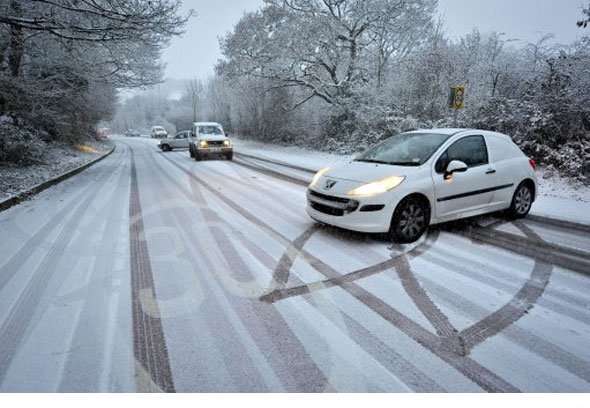 Class
28:
Tuesday,
11/29/22
Class
28:
Tuesday,
11/29/22Warm Up: If you need to stop a car quickly, why should you avoid locking the tires and skidding?
Today:
- Return slideshow grading sheets. VIDEO. If you want to correct and resubmit your slideshow for an improved grade, you can do that once. Students who did not turn in the slideshow on time can turn it in, but you will not be allowed to submit corrections afterward.
- Solve a "real life problem" with a sliding block of wood. Do a practice together first on handout p.13. VIDEO. You can work on this alone or with a partner, but you need to be able to do this on your own. It may be on the test.
Homework:
- Force problems #9 and #10 on p. 19 of the Unit 2 handout (PDF) Answers
 Class
27:
Friday,
11/18/22
Class
27:
Friday,
11/18/22Warm Up: How can you create a nice scan of a drawing to insert in your slideshow?
Today:
- Check/review the homework VIDEO
- Work on Water Rocket Slideshow, in Google Classroom.
Homework:
- None!
 Class
26:
Wednesday,
11/16/22
Class
26:
Wednesday,
11/16/22Warm Up: Two identical triplets weigh 700N each. They are both standing on properly-functioning bathroom scales in elevators (different elevators). One bathroom scale reads 600N. Another reads 700N. The third reads 800N.
1. What does the reading on a bathroom scale always tell you?
2. What is going on here? Why do the scales have different readings?
Today:
- Check/review the homework VIDEO
- Return and review Forces Quiz #1 VIDEO
- Do some "standing on a bathroom scale in an elevator" problems (p. 12 of handout). VIDEO
- Work on Rocket Diagrams
Homework:
- Finish the eleator problems on p.12 Unit 2 handout (PDF) Answers
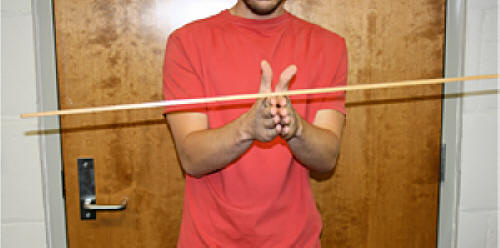 Class
26:
Monday,
11/14/22
Class
26:
Monday,
11/14/22Warm Up: One way to find the center of mass (a.k.a. balance point) of a stick is to support it with two hands and then slowly move those two hands together until they meet under the stick's center of mass. Why does this method work?
Today:
- Students who were absent on Thursday, take the quiz.
- Award the donuts.
- Take some time to finish the homework (I'm not sure that I really made sure that people understood what the homework was, and that you had a copy). VIDEO
- The rocket analysis is postponed for now. Instead, we're working on Friction.
- Notes and Practice: Friction and the Normal Force -- pages 10-11 of the Unit 2 handout (PDF) Answers Last Year's video from class Today's VIDEO
- Disassemble rockets
Homework:
- Finish the friction problems on p.11 Unit 2 handout (PDF) Answers
 Class
25:
Thursday,
11/10/22
Class
25:
Thursday,
11/10/22Warm Up: According to Newton's 3rd Law, every force has an equal and opposite force. So how do you win a game of tug-of-war?
Today:
- Quiz
- Final rocket launch
- Disassemble rockets. Remove duct tape, staples, weights, and string. Recycle bottle plastic and large pieces of cardboard. Return the weights to the peanut butter jar. Stuff the parachute plastic in the bag (there will be a bag).
Homework:
- Number 6, from last class' practice quiz. Practice quiz pdf

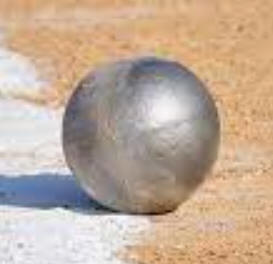
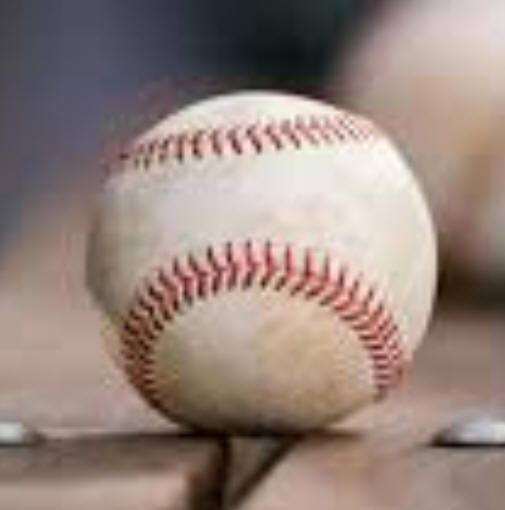 Class
24:
Tuesday,
11/8/22
Class
24:
Tuesday,
11/8/22Warm Up:
1. Which can you throw with more force, a Wiffle Ball® (0.045kg), a baseball (0.145kg), or a shot put (5.45kg)? Or is there no difference? Explain your thinking. Some calculations -- don't peek before thinking.
2. What limits the amount of force that you can apply when you throw an object?
Interesting Link: article about the fastest pitch ever thrown
Today:
- Check/review homework VIDEO
- Practice quiz pdf VIDEO
- Work time -- next class is the last chance to fly your rocket. Successful rockets (launch with proper parachute deployment) get +2% on the project.
Homework:
- Study for the quiz -- next class, similar to today's practice quiz
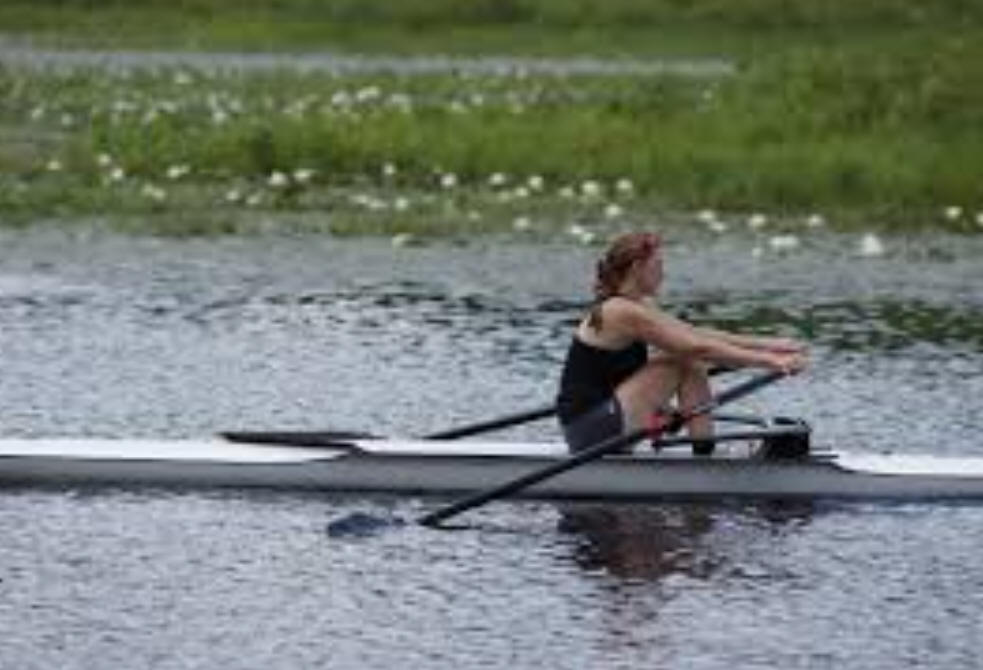 Class
23:
Friday,
11/4/22
Class
23:
Friday,
11/4/22Warm Up: This 50kg rower has an acceleration of -1m/s2. She is pulling against the oars with a force of 100N. Draw and calculate all of the forces acting on the rower.
Today:
- Check/review the homework VIDEO
- 10 minutes of rocket work time
- Rocket launch -- send up a sensor in the rocket that has already proven to be successful
Homework:
- Complete #7 on Page 17 of the packet. Answers
 Class
22:
Wednesday,
11/2/22
Class
22:
Wednesday,
11/2/22Warm Up:
1. How fast does chalk fall? Is it faster than a cat?... My spreadsheet answer
2. Sometimes people celebrate special occasions by firing guns into the air. Is this safe?
 3. Why don't clouds fall out of the sky?
3. Why don't clouds fall out of the sky?
Calculated terminal velocities of various spheres.
Today:
- Check/review the homework VIDEO
- Another parachuter "sudoku" practice -- Packet p.9 -- similar to tonight's homework VIDEO
- Finish rockets
- Unit 2 handout (PDF) Answers
Homework:
- Packet p. 18 -- parachuter "sudoku" Answers
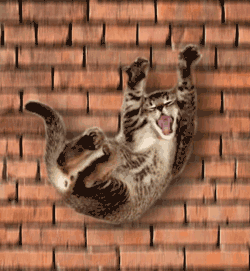 Class
21:
Monday,
10/31/22
Class
21:
Monday,
10/31/22Warm Up: According to this article, emergency clinic records of 132 cats that jumped from windows of buildings showed a 90% survival rate. The average drop was 5.5 floors.
Today:
- Check/review the homework VIDEO
- Notes -- Drag, and force diagrams with falling objects (packet p. 8-9)
- Rocket Launch?
- Unit 2 handout (PDF) Answers
Homework:
- Packet P. 4
- Packet p. 18 -- parachuter "sudoku" Answers
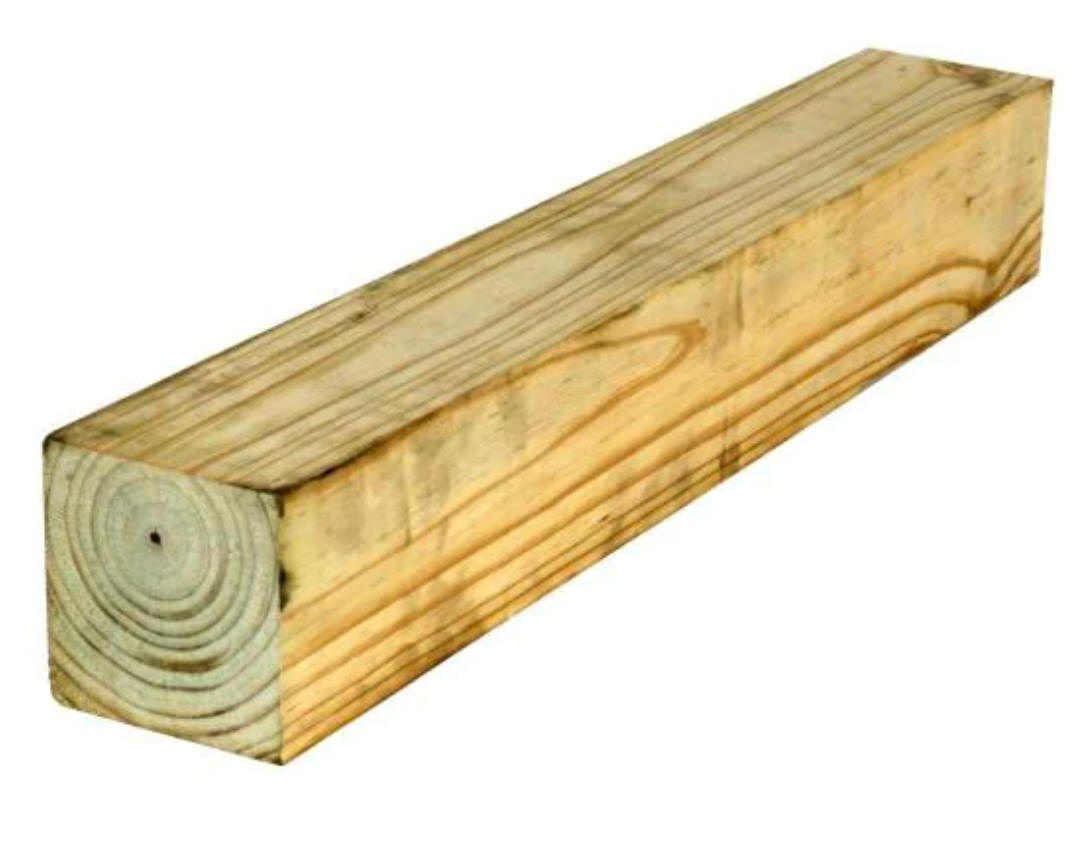

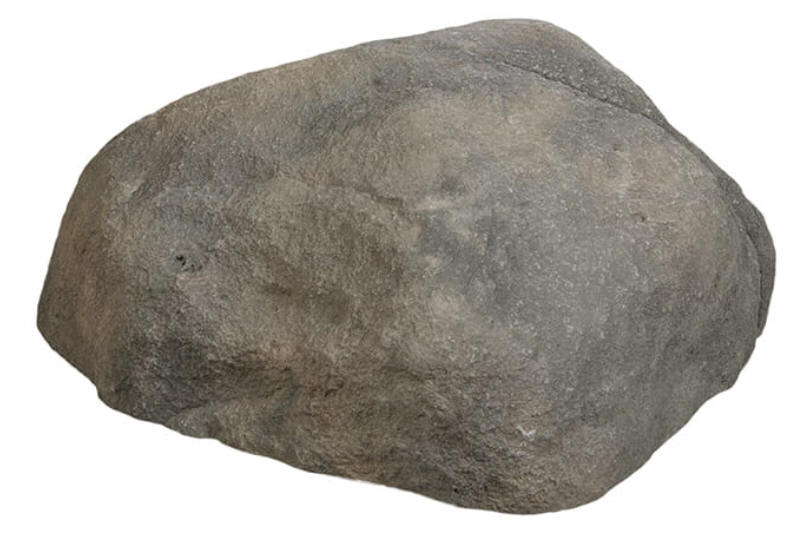 Class
20:
Thursday,
10/27/22
Class
20:
Thursday,
10/27/22Warm Up: I have a length of treated 4"x4" lumber, some large nails, a hammer, and a large rock. How will it feel if I put the rock on my head and then have someone pound nails into the wood on top of the rock?
Today:
- Check/review the homework VIDEO
- Collect Newton Sled data -- top of page 3, in the packet. VIDEO
- Finish the rockets! Launch them next week, on the first day with nice enough weather. Videos...
Homework:
- Finish answering the Newton Sled questions.
Warm Up: Why can't you pick yourself up?
Today:
- Check/review the homework VIDEO
- Finish the rockets! Launch them next week, on the first day with nice enough weather. Videos...
Homework:
- Complete #4 and #5 on page 17 of the handout. Answers
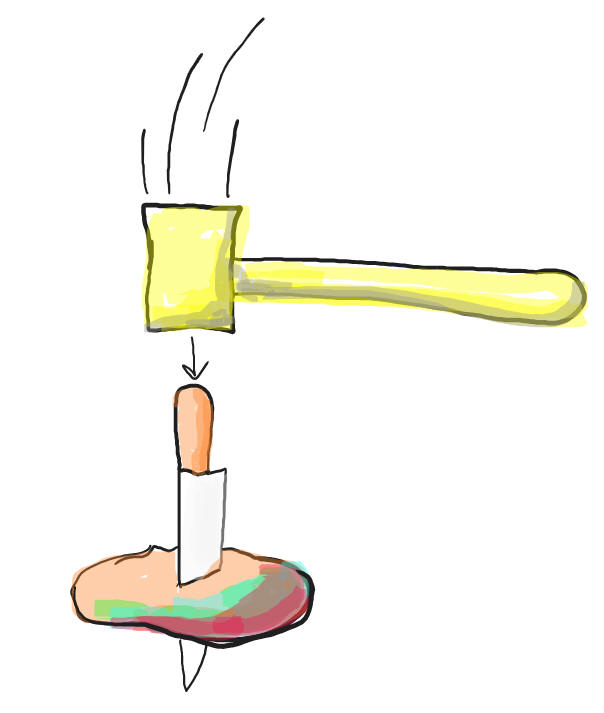 Class
18:
Friday,
10/21/22
Class
18:
Friday,
10/21/22Warm Up: What will happen if I poke a knife through a potato, hold both objects in the air with the knife pointing downward, and then hammer the butt of the knife into the potato? Why? What if it's an apple, because I didn't have potatoes?
Today:
- Return retakes
- Check/review the homework VIDEO
- Finish the notes on p. 1-2. VIDEO
- Make rocket platforms and nose cones. VIDEO -- this video needs to be revised
Homework:
- Complete the review questions on page 16 of the handout. Answers
Warm Up: None
Today:
- Optional Test retake
- If you have time, finish your parachutes (unless you've already done it) -- radii about 40cm and 15cm; 8 shroud lines
Homework:
- Due on Friday -- Finish the Practice Problems on pages 6 & 7 of the handout. Answers
 Class
16:
Monday,
10/17/22
Class
16:
Monday,
10/17/22Warm Up: It is possible to remove a sheet paper from under a dry erase pen without touching or tipping the pen. How can one do this without tipping the pen? Why does the pen usually fall?
Today:
- Notes and Practice with Newton's 2nd Law: Unit 2 handout (PDF) p. 1, 5, & 6. Filled-in notes VIDEO
- Rocket work time -- finish parachutes; make fins.
Homework:
- Test retake on Wednesday -- study (see videos in Google Classroom)
- Due on Friday -- Finish the Practice Problems on pages 6 & 7 of the handout. Answers
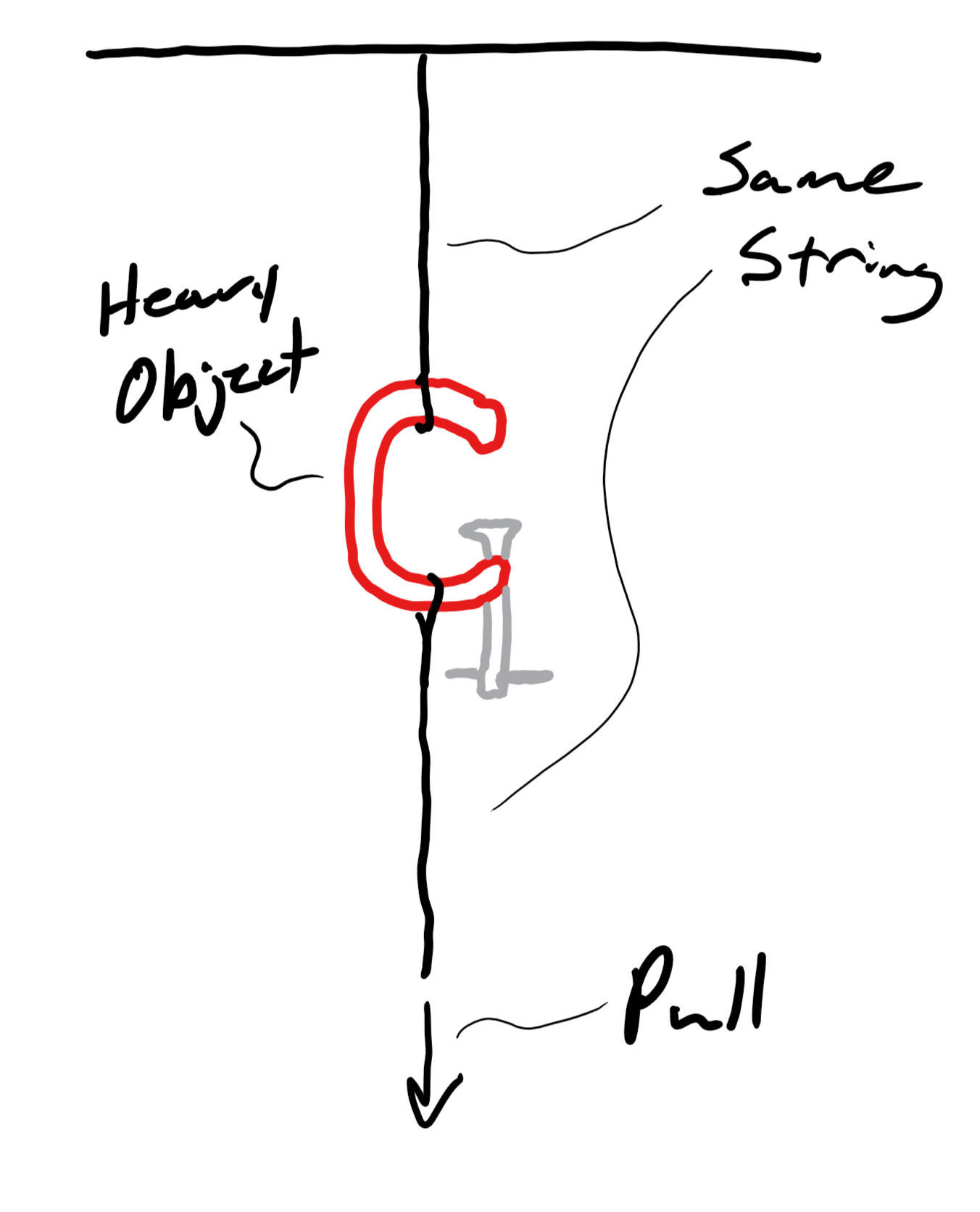 Class
15:
Thursday,
10/13/22
Class
15:
Thursday,
10/13/22Warm Up: There is a heavy object suspended from the ceiling by a string. Another segment of the same string is hanging downward from the object. I am going to pull on the bottom string until one of the two strings breaks. Which string is going to break first? Why?
Today:
- Return tests. Test distribution

- Get Unit 2 handout (PDF) Answers-- Forces
- T-shirt and towel launching?
- Notes?
Homework:
- Study for test retake
Warm Up: No warm-up today. Star reader and then the test.
Today:
- STAR Reader test
- Short break -- last minute questions
- Unit 1 Test -- Motion (Kinematics). Take your time. Check your work. Don't skip questions.
Homework:
- No homework!
Warm Up: Go to this web page on your chromebook and open up the video segment where I am explaining how to do number 17 on the practice test.
Today:
- Get a clean copy of the practice test (PDF) .
- Check and review the homework. (Page 4, Page 5)
- Begin the Water Rocket Project/Contest.
- Today -- Make two parachutes. The purpose of the small
parachute is to deploy the large parachute. The purpose of the
large parachute is to protect an altitude sensor that will help
us create a graph of position (height) vs time. VIDEO showing a
finished rocket.
- Watch this video -- Simple way to make a parachute.
- Materials: cardboard (for keeping under your hot glue gun), hot glue, string, scissors, plastic sheet (painter's drop cloth)
- Parachute sizes:
- Large parachute -- radius 40-50cm
- Small parachute -- radius 15-20cm
- Next week -- Make fins, a nose cone, and fuselage. Try to build the rocket that will go the highest. Any rocket that does not parachute safely to the ground will be disqualified. After that, launch and collect sensor and video data.
- Today -- Make two parachutes. The purpose of the small
parachute is to deploy the large parachute. The purpose of the
large parachute is to protect an altitude sensor that will help
us create a graph of position (height) vs time. VIDEO showing a
finished rocket.
Homework:
- Study for test next class -- Tuesday, after the STAR reader test -- sorry :-(
- See lClass #12 homework for test studying suggestions.
Warm Up: How should you study for Tuesday's test?
Today:
- Check and review the homework. VIDEO
- Unit 1 Practice Test (PDF)
- Make sure that everyone can see these videos and solutions.
- The test will be next Tuesday (since we have conferences on Friday and Indigenous People's Day on Monday.)
Homework:
- Finish the practice test.
- Study for Tuesday's test. Practice the problems and questions on the practice test. Use a clean copy to test yourself. Do not simply memorize answers, because most of the answers will change. Make sure that you unerstand the concepts. If you don't understand something, watch the video (links above). Talk yourself through how the test might be different, and how that would affect your work. Practice, ahead of time, until you know everything. Then practice again on Monday night.
 Class
11:
Thursday,
9/29/22
Class
11:
Thursday,
9/29/22Warm Up: Consider the case of this ball. At t = 0s, the ball is flying directly upward with a speed of 20m/s. Sketch graphs of the ball's position, velocity, and acceleration (vs. time) over the next 4 seconds.
Let's assume that there is no air resistance and that g = 10m/s2.
Today:
- Return the Spool Car Analyses and discuss the grading. Fix it and re-submit if you want to improve your grade.
- Check/review homework VIDEO
- The last bit of notes (and practice) with kinematics formulas -- p. 13 and 14. VIDEO
- Work time -- start on your homework
- Unit 1 Packet (PDF). Answer Key
Homework:
- Packet p. 19 -- The end! (of the packet)
 Class
10:
Tuesday,
9/27/22
Class
10:
Tuesday,
9/27/22Warm Up: A unit conversion problem...
1. How old is someone who has lived a billion seconds? Have you lived that long?
2. What is the significance of 1 billion heartbeats?
Today:
- Can you guess the lowest grade in the class, right now? What do you think it will be after our first test?
- Check/review homework VIDEO
- Notes and practice with unit conversions, on p. 14 of the packet VIDEO
- Finish Spool Car Analysis Activity See Assignment in Google Classroom. Here's my example.
- Work time -- start on your homework
- Unit 1 Packet (PDF). Answer Key
Homework:
-
Complete questions from two pages in the packet:
- page 15, #9-11
- page 18 -- whole thing. This is the 3rd page of the test review.
- Here's the Answer Key
 Class 9:
Friday,
9/23/22
Class 9:
Friday,
9/23/22Warm Up: If you throw a ball straight up with a velocity of 10mph...
1. What's its velocity at the highest point?
2. What's its velocity just before it returns to your hand?
Today:
- Check/review homework VIDEO
- Notes -- Free-fall on p. 8 VIDEO
- Spool Car Analysis Activity (**Instructions for today VIDEO**): See Assignment in Google Classroom. The directions in the google doc have changed.
- Work time -- start on your homework
Homework:
- Complete page 17 in the packet. Answer Key This is the 2nd page of the test review.
 Class 8:
Wednesday,
9/21/22
Class 8:
Wednesday,
9/21/22Warm Up: The world record rubber band car traveled this 5m distance in 2.82 seconds. What was its average velocity?
Today:
- Check/review homework VIDEO
- Spool Car Analysis Activity (Instructions for today VIDEO): See Assignment in Google Classroom
- Work time -- start on your homework
Homework:
- Complete p.16 in the packet. Answer Key This is the first page of the test review.
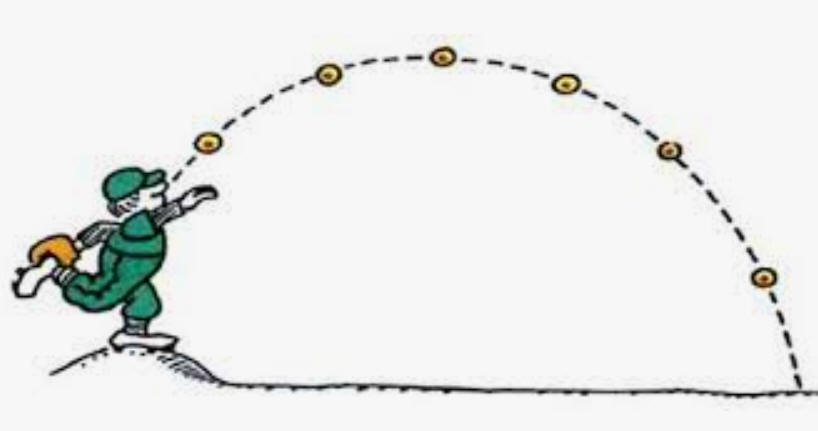 Class 7:
Monday,
9/19/22
Class 7:
Monday,
9/19/22Warm Up: Velocity and Acceleration Combinations Matching Quiz. Use this link to take the quiz, or take it in Google Classroom.
Today:
- Check/review homework VIDEO
- Spool Car Analysis Activity:
- In groups of no more than 3, assemble a spool car. Again, here's how to assemble them...VIDEO
- Practice and/or reconfigure the car to make it go as fast as possible over the 5 meter long course.
- Get a video made of your car traveling from one blue tape to the other -- Mr.Stapleton will do it.
- Work time -- start on your homework
Homework:
 Class
6:
Thursday,
9/15/22
Class
6:
Thursday,
9/15/22Warm Up: What is a spool car? How does one work?
Today:
- Check/review homework VIDEO
- Turn in the "Creating Velocity and Acceleration Combinations" assignment in Google Classroom. Discuss the answers -- talk about the quick way and the more complex way (VIDEO)
- Preview of next class -- assemble and operate a spool car 3.0. It should travel 5m in a fairly straight line, starting from rest.
- Practice: Motion graph calculations, on pages 10 and 11 (VIDEO
solutions to 4,5,6, and 9).
Calculate acceleration using a position vs time graph.
- Videos from last year's class showing how to do these...
- Work time
Homework:
- Complete #1,2,3, and 7, on p. 10 and 11. Use each graph to calculate acceleration. Solutions

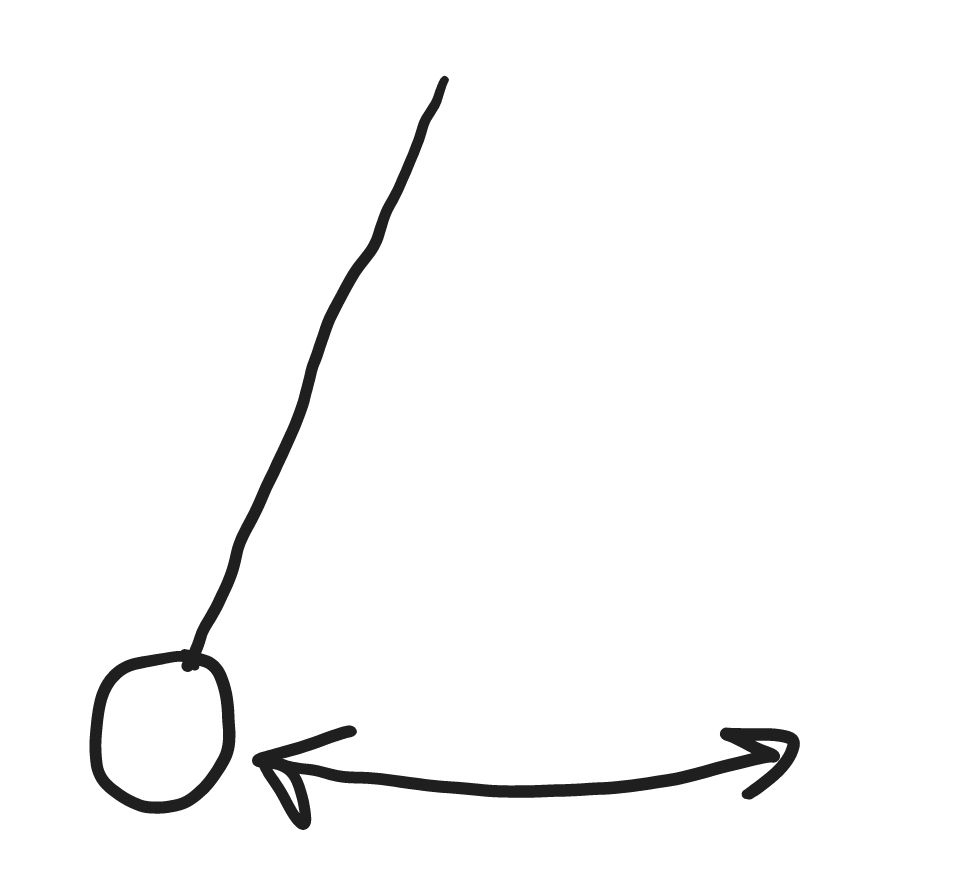 Class 5:
Tuesday,
9/13/22
Class 5:
Tuesday,
9/13/22Warm Up: Suppose a pendulum is allowed to swing back and forth from left to right (and back). At what points in the pendulum's motion does it have these combinations of velocitya and acceleration?
Today:
- Check/review homework -- practice some position graphs
- Finish the "Creating Velocity and Acceleration Combinations" assignment in Google Classroom.
- Spool Car preview
Homework: Complete the position graphs on p.8-9 of the Unit 1 Packet (PDF). Answer Key
 Class
4:
Friday,
9/9/22
Class
4:
Friday,
9/9/22Warm Up: Suppose you want to record the motion of a cart (1) moving on a track (2), using a motion detector (3). Your goal is to produce a graph with positive velocity and zero acceleration. You can use few books (4) and a computer (5) to do this. How can you do this?
Today:
- Check/review homework (#2 velocity graph on page 8)
- Acceleration Notes -- P.6-7 of the packet (Answer Key) VIDEO from class today
- Graphing and matching motions, and creating motion graphs and describing their motion (p.8-9) -- try the examples and 1-4 together, using the motion sensor, on the TV? Then do 5-8 on your own.
- Activity -- Complete the "Creating Velocity and Acceleration Combinations" assignment in Google Classroom.
Homework: Complete the acceleration graphs on p.8-9 of the Unit 1 Packet (PDF). Answer Key
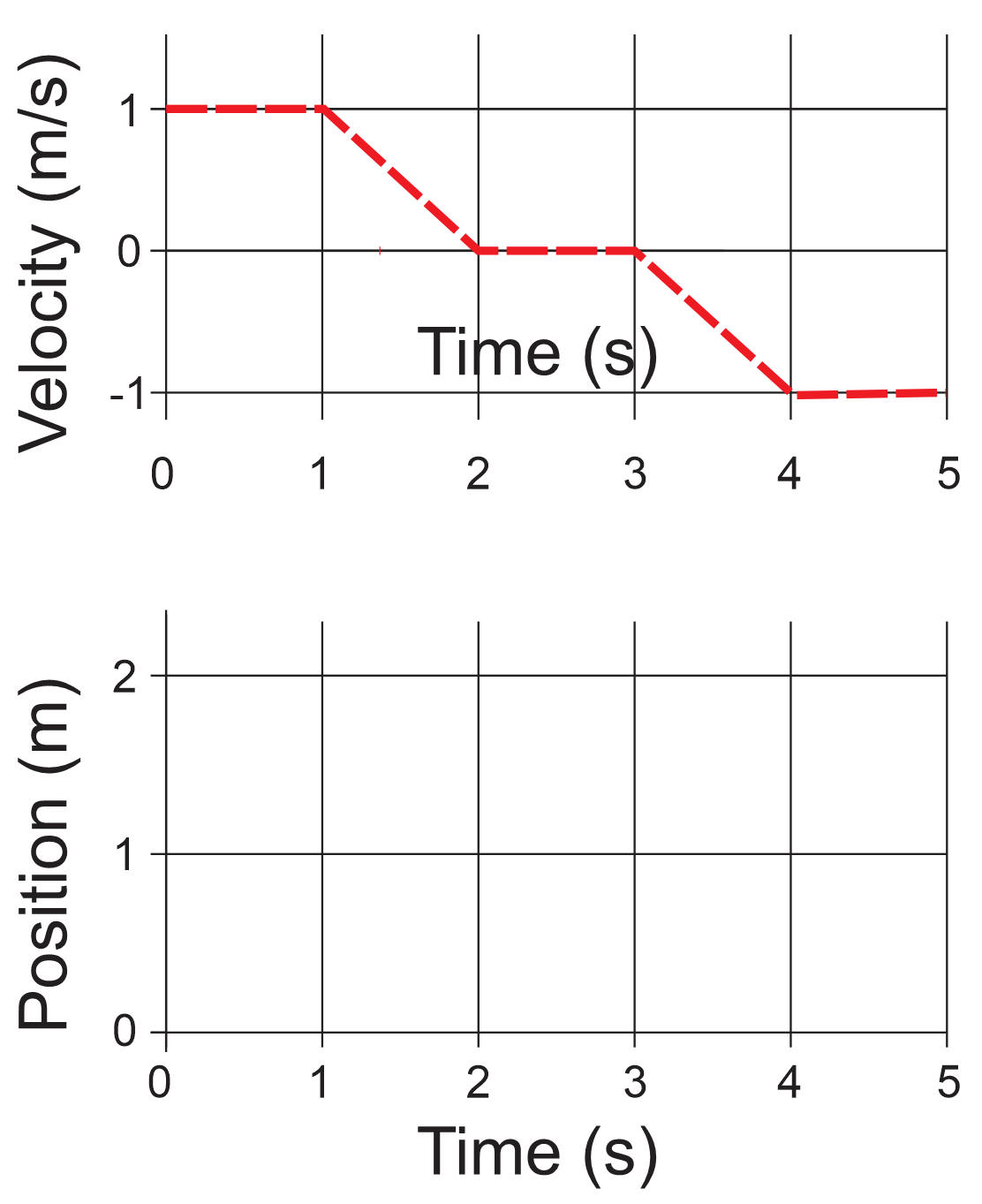 Class
3:
Wednesday,
9/7/22
Class
3:
Wednesday,
9/7/22Warm Up: 1) Suppose you want to walk in front of a motion sensor and produce the velocity graph shown here. How do you do it?
2) What would a graph of your position vs. time look like?
Today:
- Check/review homework
- Brief practice quiz over position vs. time graphs
- Info:
- Fill out the Student info sheet (PDF)
- Mr. Stapleton slideshow
- Next class -- Acceleration Notes -- P.6-7 of the packet (Answer Key)
- Graphing and matching motions, and creating graphs of position, velocity, and acceleration (p.8-9) -- together, on the TV?
- Homework time
Homework: Complete #2 on page 8 of the Unit 1 Packet (PDF). Just draw the velocity graph. Here's the video from class showing how we did this with a graph on page 7.
.JPG) Class
2:
Friday,
9/2/22
Class
2:
Friday,
9/2/22Warm Up:
The graph on the right shows the positions at different times for seven different people, relative to a motion detector at the 0m mark. Which person (people) was (were)...- moving at a constant speed
- moving toward the sensor
- not moving at all
- accelerating
- decelerating
- accelerating the fastest
- moving at the fastest constant speed
Today:
- Check for completion of packet p1.
- Discuss Motion Matching Answers (p.1). VIDEO
- Some practice quizzing over position graphs. What do they mean, and how are they different? VIDEO
- Notes -- Introduction to Kinematics, p. 2-4 of the Unit 1 Packet (PDF) Unit 1 Packet Answer Key VIDEO
- Homework time
Homework:
- Complete #5-8 on page 4 of the Kinematics Intro notes, if you didn't finish it during class
- We will have a short practice quiz next class over position graphs (similar to page 1 of the packet, and the motion matching activity). It won't count toward your grade, but you may want to review page 1 of your notes beforehand.
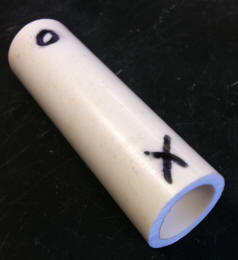 Class
1:
Wednesdsay,
8/31/22
Class
1:
Wednesdsay,
8/31/22Warm Up:
Spin one of the "sprotating cylinders" by pressing one end until it squirts out from under your finger. Try pressing the other end.
When the cylinder is spinning, why do you only see the symbol that you press?
Today:
- Learn names/pronunciations -- fill out seating chart
- Get the Unit 1 Packet (PDF) Unit 1 Packet Answer Key
- Enter attendance
- Preview
- of the year (see last 21-22 site, starting around class #47), and Course Expectations
- This unit -- skim through the packet
- Begin the first unit -- Kinematics (Velocity, Speed, Acceleration)
- Motion Matching Activity
-- do the activity and answer the questions. Work in groups of
3 or 4.
- Directions: Matching Motion Graphs with motion detector (Web page)
- Answer the motion matching activity questions on page 1 of the Unit 1 Packet.
- Motion Matching Activity
-- do the activity and answer the questions. Work in groups of
3 or 4.
- Today's class time -- 9:15-10:25
Homework: If you didn't finish the motion matching questions (Unit 1 Packet, page 1), finish them before next class. Answer Key